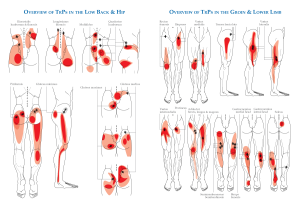Pain Management for Spine and Back Pain in Athletes

Discomfort that occurs along the spine, from the neck to the lower back, is called back pain. Back pain can be a focused ache in one spot or travel to other areas such as the shoulder, buttocks, thighs, or legs. Back pain in athletes can happen while playing sports, after a strenuous workout, or during everyday actions such as bending over or sitting.
Anyone can experience back pain, but athletes are especially vulnerable regardless of the sport they play or their level of competition. The reason for this susceptibility is due actions, including:
- repetitive high-impact activities
- overuse
- sudden movements
- sustained positions that place stress on the muscles and spine in the back.
Causes of Back Pain in Athletes
Back pain in athletes can be acute or chronic and arise from a myriad of causes. The terms acute and chronic refer to the duration and nature of pain experienced.
Sudden back pain that lasts for less than six weeks is considered acute back pain. Although it can be severe, it is usually temporary, and the pain will go away as your body heals. Acute injuries might include:
- sprains – overstretched or torn ligaments
- strains – overstretched or torn muscles and tendons
These can result from lifting heavy weights, abrupt movements, or a direct impact to the back.
Chronic back pain refers to persistent or long-lasting discomfort, typically lasting for three months or more. Conditions include:
- arthritis
- disc degeneration
- stress fractures in the spine
- structural abnormalities
Overuse, repetitive movements, and poor posture or form can be a contributing factor.
Managing Back Pain for Athletes
As an athlete, you can experience a decline in performance and risk further injuries if you ignore back pain. Persistent discomfort can cause you to change how you move and can strain other parts of your body. Therefore, it is necessary to have effective pain management strategies in place.
Treatment of Back Pain in Athletes
Once diagnosed, the treatment for back pain in athletes often begins conservatively. It may include rest, medication for pain relief and inflammation, and application of heat or.
- Cold therapy. Appling ice packs or compresses for 20-minute intervals to reduce pain, inflammation, and swelling is especially helpful in the first 48 hours post-injury.
- Heat therapy. Taking a warm bath or using a heating pad to relax tense muscles can improve blood flow and alleviate muscle spasms.
- Over-the-counter medications. Medicines like ibuprofen and acetaminophen can offer short-term back pain relief.
- Stretching exercises. Incorporating gentle stretching such as yoga and Pilates into your routine can improve flexibility and condition back-supporting muscles.
- Low-impact exercises. Engaging in activities such as walking and swimming can keep you moving. Gentle exercises can relieve back pain, enhance core strength, and boost endurance.
- Physical therapy. Working with a physical therapist will help you to develop a safe and effective exercise and strengthening program tailored to your specific symptoms and needs.
- Massage therapy. This technique can target painful areas, ease muscle tension in areas causing pain, and promote overall relaxation.
In cases of chronic or severe back pain, more intensive pain relief treatments may be necessary. These could include cortisone injections for inflammation, nerve block therapies for pain management, or even surgery in extreme cases.
Back pain in athletes is a common issue that requires the appropriate diagnosis, treatment, and prevention strategies. Athletes should work closely with their doctor, trainers, and coaches to manage back pain effectively and maintain their athletic performance.
Don’t let back pain hinder you. Take the first step towards effective management by scheduling an.




